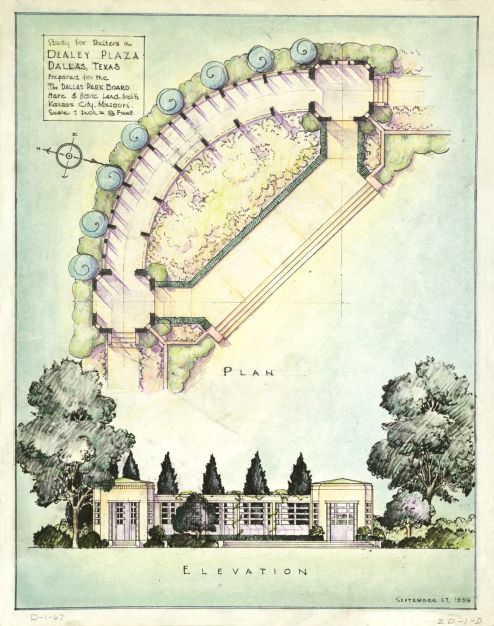
New Deal Dallas 
The City of Dallas and Federal Work Relief Programs, 1934-1940
An Exhibit of Selected Materials from the Dallas Municipal Archives
An Exhibit of Selected Materials from the Dallas Municipal Archives

|
Selected Dallas Municipal Archives Collection Guides containing New Deal documentation:
|
The Great Depression and Roosevelt's New Deal"The New Deal" refers to a series of domestic programs (lasting roughly 1933-39) implemented during the administration of President Franklin D. Roosevelt to combat the effects of the Great Depression on the U.S. economy. In addition to certain key economic programs, several of the most prominent New Deal initiatives focused on providing work relief to unemployed workers from all segments of U.S. society--from unskilled laborers to highly skilled artists and technicians.
The Work Projects Administration (1935-43; known 1935-39 as the Works
Progress Administration) was the coordinating agency for many of these
activities. The WPA was a large and complex organization and its
programs were often coordinated at many different levels--by the
Federal government and to varying degrees by state, regional, and local
entities.
15,000 Dallasites were
on the relief rolls by 1933, and times were tough in
Dallas. Federal
Programs in Dallas included the PWA – Public Works Administration
(1933), which split funding between City and federal sources and built
several buildings in Fair Park; the WPA – Works Progress
Administration (1935), which constructed parks and built roads; the CCC
– Civilian Conservation Corps (1933), which built parks and did
other outdoor construction. The CCC was most famous in Dallas for its
camp at White Rock Lake, which had educational and training
opportunities.
The Dallas Municipal Archives holds several collections of
administrative records on the implementation of New Deal programs in
Dallas, complementing Federal records of the Civilian Conservation
Corps, Works Projects Administration, National Youth Administration,
and the Public Works Administration. These collections include textual
records, maps, charts, plans and drawings, and photographs.
This online exhibit explores the City of Dallas' efforts and programs to put citizens back to work, the creation of some of Dallas' lasting landmarks, and the living heritage of federal relief programs.
|
| Exhibit design: John Slate |